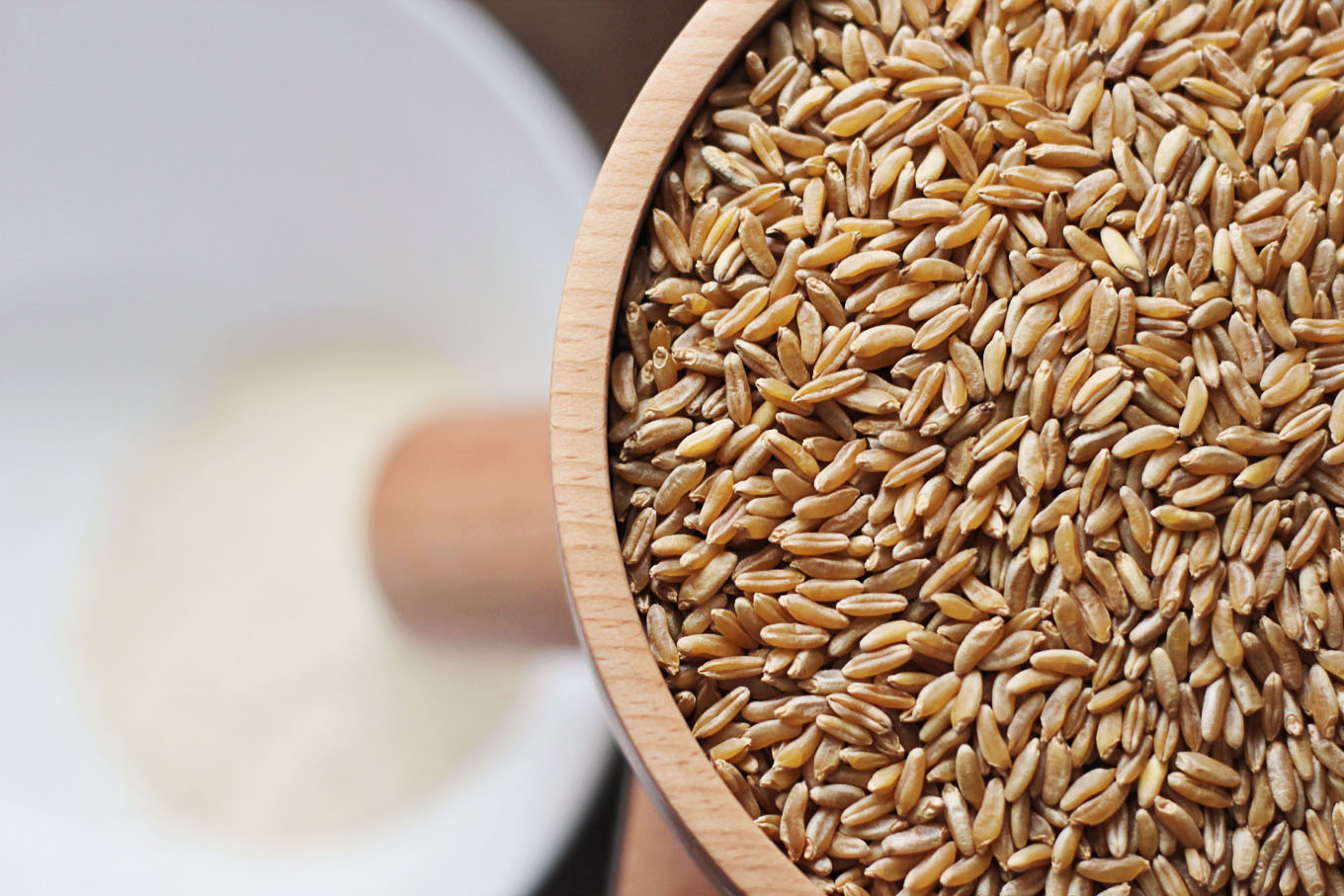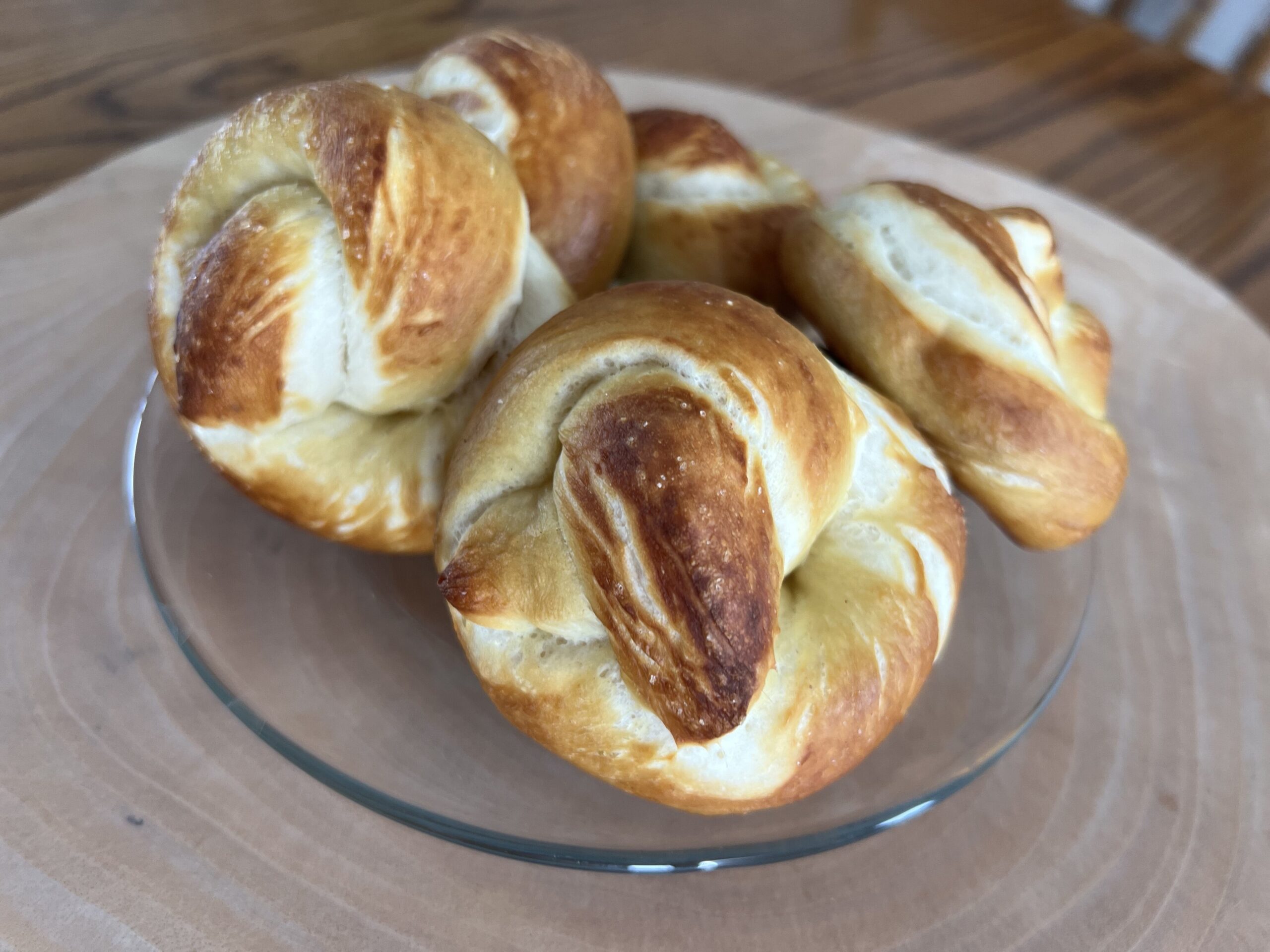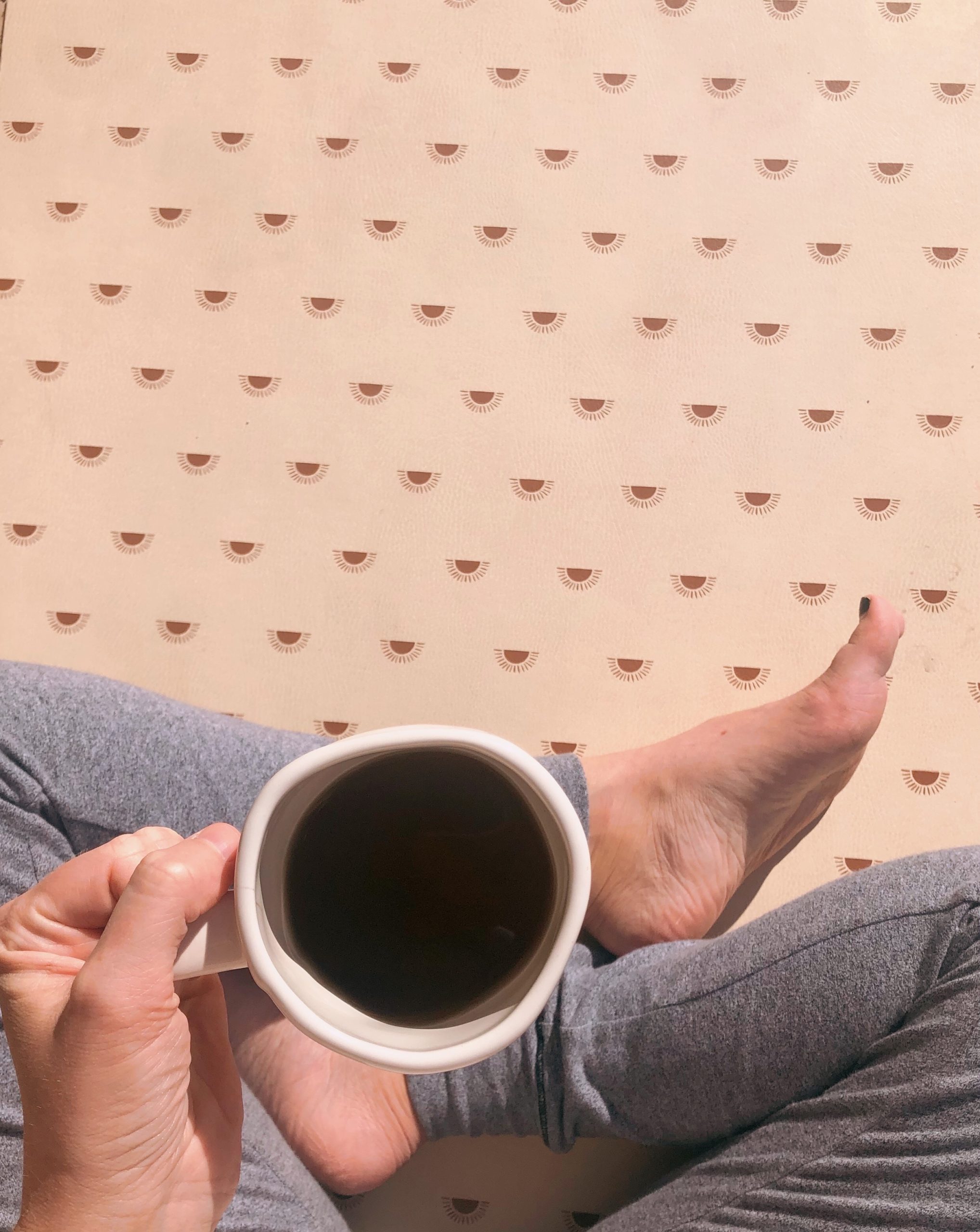Often referred to by its trademark name, Kamut, Khorasan ancient grain is easily digestible and a great choice in baking.
In my first post of this series, I talked about white and red wheat. Today I want to tackle one of the ancient grains. Though people throw around the term “Kamut” over and over, that is actually only the trademarked name for the grain, Khorasan.Kamut has not been altered by modern breeding techniques, and therefore retains its ancient nutrients, taste, and goodness. The grain is about twice as large as modern wheat and has a great rich, nutty flavor.
Although it has a much higher protein content than wheat (30-40% higher), Kamut does not contain as much gluten, meaning it’s not ideal for bread. Loaves made with Kamut flour will be very dense.
Using Kamut flour in other baked goods such as muffins, cakes, and cookies, is a great way to get this ancient grain into your diet. Other ways to use it include soaking and boiling whole kernels as a breakfast cereal, or in salads, soups/stews.
Khorasan is high in fiber and many vital minerals including magnesium, zinc, and phosphorous. Some who are sensitive to wheat are able to digest this grain without discomfort.If you are looking to branch out of your regular wheat rotation, add some ancient grains to your diet. Kamut is a great one and is becoming widely available.
Some of my favorite places to purchase quality organic grains at a great price:- Pleasant Hill Grain – this is the company I got my Komo Classic grain mill from and I have been obsessed with it ever since. I use it weekly and have been so impressed!
- Azure Standard – a great one-stop shop for bulk items that you might not find at the grocery store. This is a co-op that delivers around the country monthly.
Another option is to try and find some local. I know this isn’t feasible for a lot of people, but it’s worth looking into.
Have you tried khorasan the ancient grain? Tell me about it!










This is the only grain I make homemade pasta with. It is incredible!
“Kamut does not contain as much gluten, meaning it’s not ideal for bread. Loaves made with Kamut flour will be very dense.” I regularly make wholemeal bread and find the wholemeal Kemut@Khorasan makes a much lighter loaf than wholemeal wheat. Most people refuse to believe that 100% wholemeal Kemut loaves are 100% because they are almost as light as white bread. It is suggested by some websites, it is because the gluten is more soluble and thus forms longer longer chains than wheat flour.
I appreciate this comment, thank you! I haven’t had much success with 100% kamut loaves. But I will keep trying, thanks for the clarification.